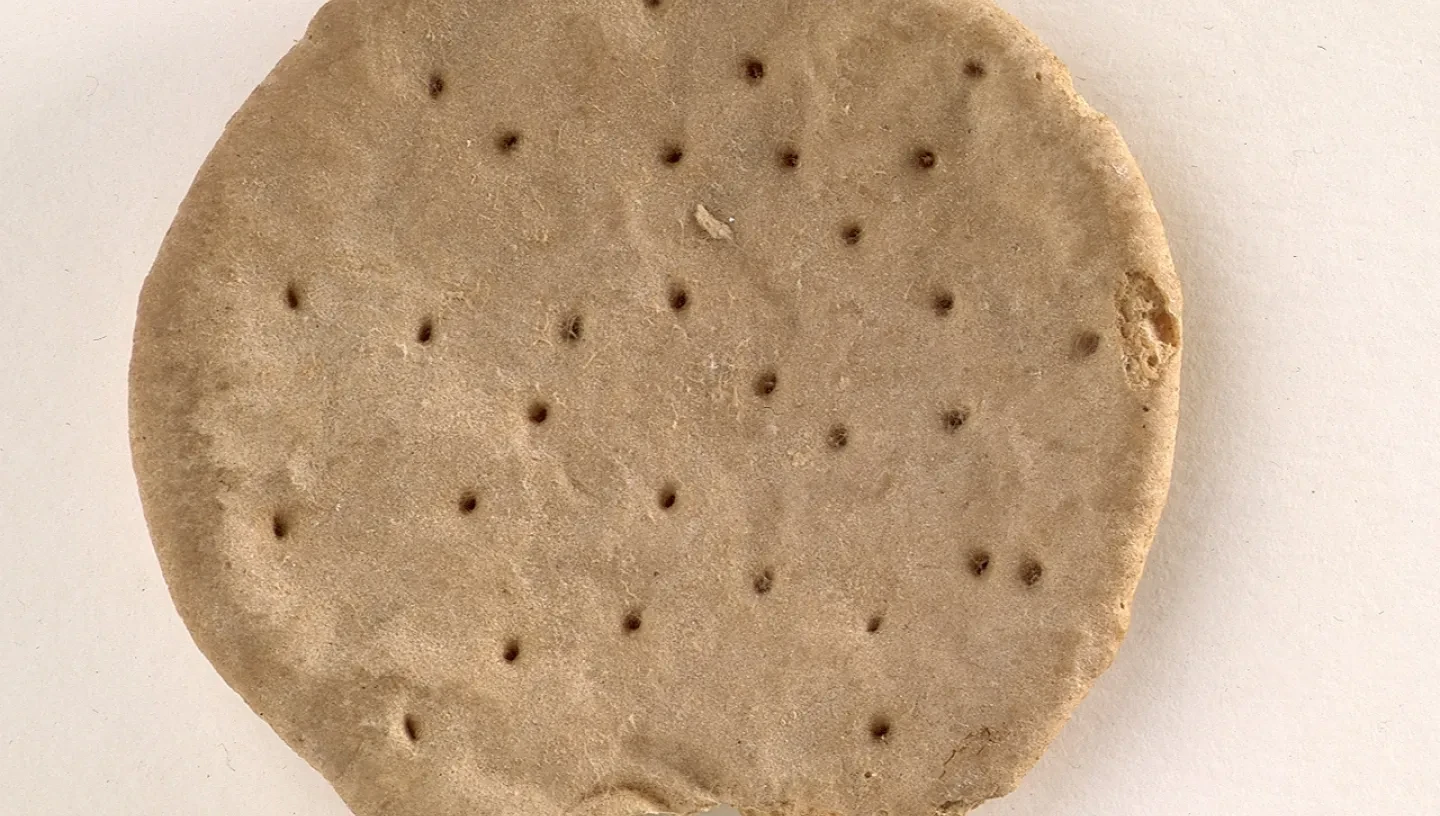
The ship's biscuit
The ship’s biscuit was an important part of the sailor's sea diet before the introduction of canned foods.
Long journeys at sea meant food needed to be able to survive the journey. One solution to this was the ship's biscuit - also known as hard tack.
There are references to Richard I (the Lionheart) setting out from England in 1190 with his ships suitably stored with ‘biskit of muslin’ (mixed cornmeal made of barley, rye and bean flour). Ships at the time of the Spanish Armada in 1588 had a theoretical daily allowance of 1 lb (0.45 kg) of biscuit, but it was Samuel Pepys who first regularised Navy ‘victualling’ (the provision of food supplies) and worked out the first comprehensive table of rations. These included ‘one pound daily of good, clean, sweet, sound, well-baked and well-conditioned wheaten biscuit (plus a galleon of beer and other victuals).’
Navy provisions in the 18th and 19th centuries
Biscuits were still an important part of the sailor’s sea diet in Lord Nelson’s (1758–1805) time, and remained so until bread and canned foods were introduced. Preserved beef in tins was officially issued from 1847 – although some tinned items had previously been used for Arctic expeditions. Canned meat was first marketed in 1813.
Bread became a Navy issue item in the mid-1850s and was referred to as ‘soft bread’ in the Royal Navy to distinguish it from biscuits, which had sometimes been called ‘bread’. ‘Hard tack’ was, however, the most well-known term for the ship’s biscuit. The ingredients were stone ground flour, water and salt, which were mixed into a stiff dough, baked in a hot oven for 30 minutes and then left to harden and dry.